In addition to having gorgeous foliage, Autumn Blaze maple trees also do well in a variety of soil types. They do, however, have their share of problems, just like any other tree species. To protect the health and lifespan of Autumn Blaze maples, it is essential for property owners to be aware of any possible issues that may develop. We will examine the typical problems with Autumn Blaze maple trees in this detailed guide, including insights, fixes, and preventative actions.
Common problems with Autumn Blaze maple trees include structural weakness, iron deficiency (chlorosis), root rot, cracking branches, and shallow roots. These issues may affect the tree’s resilience to storms and other environmental stresses as well as its health and attractiveness. To treat and avoid these problems, regular tree maintenance and swift action are crucial.
| Problems | Fixes | Prevention |
|---|---|---|
| Structural Weakness: A Vulnerability in Storms | Understanding the Fragility | Mitigating the Risk |
| Iron Deficiency: Spotting the Telltale Signs | The Challenge of Chlorosis | Remedies for Chlorosis |
| Root Rot: A Silent Culprit | Understanding Root Rot | Detecting and Combating Root Rot |
| Cracking: A Consequence of Rapid Growth | The Challenge of Branch Strength | Protecting Against Cracking |
| Shallow Roots: Overcoming the Challenge | Understanding Shallow Root Systems | Enhancing Root Development |
Structural Weakness: A Vulnerability in Storms
Understanding the Fragility
The structural fragility of Autumn Blaze maple trees is a prominent issue that needs attention. Despite their remarkable beauty, these trees are prone to damage from even minor storms, posing a risk to both their branches and nearby properties. The main factor contributing to their vulnerability is their rapid growth rate, which results in the growth of long but weak branches unable to withstand severe weather conditions. As a result, the overall aesthetics and structural integrity of these trees are compromised.
Autumn Blaze maples are renowned for their stunning red and orange foliage during the fall season, making them highly sought after for their ability to enhance any landscape. However, the rapid growth characteristic of these trees raises concerns among arborists and homeowners. While their growth rate is impressive, it weakens the branches, making them susceptible to breaking when faced with strong winds, heavy rain, or snowfall.
The elongated branches of Autumn Blaze maples lack the strength and flexibility needed to withstand the forces of nature. Even minor storms can cause these delicate branches to break, potentially leading to property damage or injuries. The brittleness of the branches is further exacerbated by their weight, as the rapid growth often results in thicker and heavier limbs. Consequently, the tree’s structural integrity is compromised, increasing the likelihood of failure and potential collapse.
In addition to the immediate concerns of property damage and safety risks, the fragility of Autumn Blaze maples can also affect their long-term aesthetics and health. Damaged or broken branches not only diminish the overall visual appeal of the tree but also create entry points for diseases and pests. Neglected weak branches become vulnerable to infestations and infections, compromising the tree’s vitality and longevity.
To address the structural fragility of Autumn Blaze maples, proactive measures should be taken. Regular pruning and trimming can help manage branch growth and reduce the risk of failure. Proper pruning techniques, such as thinning out crowded areas and removing dead or weak branches, promote the tree’s structural integrity and encourage healthier growth. In some cases, cabling or bracing systems may be employed to provide additional support to weak branches or alleviate stress on heavy limbs.
Furthermore, careful consideration should be given to the placement of Autumn Blaze maples in the landscape. Planting them in locations shielded from strong winds or providing windbreaks can help minimize exposure to severe weather conditions. When selecting sites for these trees, factors such as soil quality, drainage, and sun exposure should be considered to promote optimal growth and reduce stress on the tree’s structure.
Regular inspections by certified arborists are crucial for identifying potential weaknesses or signs of damage. Early detection allows for timely interventions to ensure the tree’s safety and longevity. Arborists may recommend targeted pruning, structural support systems, or even tree removal in severe cases where the risk to property or safety becomes significant.
Mitigating the Risk
There are various actions you may take to safeguard your Autumn Blaze maple tree against structural flaws:
- Pruning: Remove any weak, diseased, or dead branches from your tree on a regular basis. A stronger and more evenly distributed structure will result from this.
- Support Systems: To increase stability during storms, install tree support systems, like as braces or cables. These techniques aid in more equally dispersing the branches’ weight, which lowers the likelihood of breaking.
- Professional Inspection: Hire an arborist to frequently inspect your Autumn Blaze maple tree. They are able to identify any structural flaws and provide qualified advice on upkeep and strengthening.
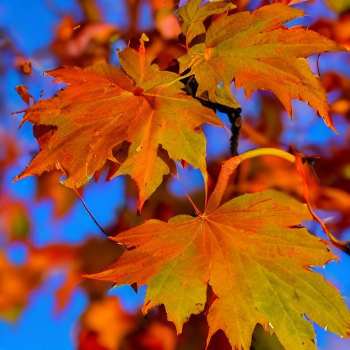
Iron Deficiency: Spotting the Telltale Signs
The Challenge of Chlorosis
Autumn Blaze Iron Maple trees are prone to a condition known as chlorosis, which is often associated with iron deficiency. One of the primary visible signs of chlorosis in these trees is the appearance of yellow pigmentation between the leaf veins, contrasting with the normal deep-green color. This yellowing indicates that the tree is not producing sufficient chlorophyll, an essential pigment for photosynthesis and overall plant health.
Chlorosis poses a significant concern for Autumn Blaze Iron Maple trees as it hinders crucial biological processes. Chlorophyll, responsible for capturing sunlight and converting it into chemical energy through photosynthesis, plays a vital role in the production of glucose—the primary source of energy for the tree. Furthermore, chlorophyll is necessary for synthesizing various essential compounds, including amino acids, proteins, and nucleic acids.
The yellow discoloration between the leaf veins signifies an interruption in chlorophyll production. Iron is particularly important in the formation of chlorophyll molecules. When there is an iron deficiency, the synthesis of chlorophyll is impeded, resulting in reduced pigment production. As a consequence, the leaves of Autumn Blaze Iron Maple trees exhibit a yellowish hue, while the leaf veins, which contain a higher concentration of chlorophyll, tend to retain their green color.
Iron deficiency can arise due to several factors, such as inadequate soil conditions or imbalances in nutrient availability. Soil pH levels significantly influence the availability of iron to plants. In alkaline soils, iron becomes less soluble and, therefore, less accessible to the tree’s roots. Additionally, excessive moisture or poor drainage can contribute to iron deficiency as waterlogged soils impede the uptake of essential nutrients by the roots.
To address chlorosis in Autumn Blaze Iron Maple trees, several remedial measures can be taken. Conducting a comprehensive soil analysis is crucial to identify any nutrient imbalances or deficiencies. This analysis provides valuable information about the soil’s pH, nutrient content, and overall composition, enabling targeted amendments to be made. Adjusting the soil pH to a slightly acidic level, typically achieved through the application of suitable amendments like elemental sulfur, can enhance iron availability.
Supplemental treatments may be necessary in persistent cases of iron deficiency. Iron chelate solutions, containing readily absorbable forms of iron, can be applied to the soil or directly to the tree’s foliage. These treatments provide a readily available source of iron, helping to alleviate the deficiency and restore healthy chlorophyll production.
Furthermore, ensuring proper soil drainage is essential in preventing or mitigating iron deficiency. Amending the soil with organic matter or implementing drainage systems can improve water movement and prevent waterlogging, facilitating nutrient uptake by the roots.
Regular monitoring and maintenance play a crucial role in managing chlorosis in Autumn Blaze Iron Maple trees. Continuous observation of the foliage helps detect early signs of yellowing, prompting appropriate interventions. Maintaining a consistent fertilization program tailored to the specific nutrient requirements of the tree can prevent deficiencies and promote overall tree health.
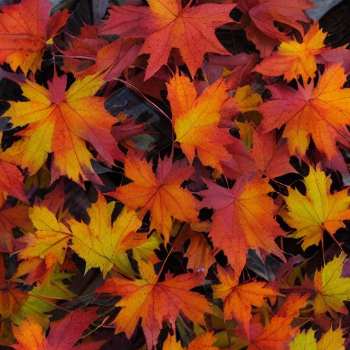
Remedies for Chlorosis
If you suspect iron deficiency in your Autumn Blaze maple tree, consider the following remedies:
- To find out the pH and iron content of the soil, do a test. The roots of the tree may have difficulty absorbing iron if the pH is too high. To remedy the deficiency, add iron sulfate or chelated iron to the soil.
- Fertilization: Implement a balanced fertilization routine that is designed especially for trees. By doing this, you can be sure the tree will get all the nutrients it needs, including iron, to support its healthy growth and development.
- Mulching: Keep the mulch away from the tree’s trunk by laying a layer of organic mulch around the base of the tree. Mulch encourages the establishment of helpful microorganisms that assist the soil retain moisture and absorb nutrients.
Buy Liquid Iron +Plus for Autumn Blaze maple – Shop from Amazon.
Root Rot: A Silent Culprit

Understanding Root Rot
Autumn Blaze maple trees are highly susceptible to a serious fungal disease known as root rot. This condition poses a significant danger as it gradually deteriorates the tree’s root structure, hindering its ability to effectively absorb vital nutrients and water. Consequently, the overall health of the tree declines over time, making it more vulnerable to other issues and environmental pressures.
Root rot is a term used to describe various fungal pathogens that attack the roots of trees. In the case of Autumn Blaze maples, these pathogens invade the roots, leading to their decay and deterioration. The fungi thrive in moist soil conditions, particularly in areas with poor drainage or excessive water accumulation. Overwatering, compacted soil, and improper planting depth can contribute to the development and spread of root rot.
As the root rot progresses, the functionality of the roots is impaired, hindering the tree’s ability to absorb nutrients and water efficiently. Roots play a vital role in the uptake and transportation of essential substances necessary for the tree’s growth and survival. When the roots are damaged by the fungal infection, their ability to perform these critical functions is compromised, resulting in nutritional deficiencies and water stress.
The deteriorating health of the tree due to root rot makes it increasingly susceptible to other problems and environmental stressors. Weakened trees are more vulnerable to secondary pathogens, such as bacteria or additional fungi, which can further damage the tree’s health. Additionally, stress from factors like drought, extreme temperatures, or poor soil conditions can exacerbate the tree’s weakened state, heightening the risk of decline or even death.
To prevent and manage root rot in Autumn Blaze maple trees, several strategies can be implemented. First and foremost, ensuring proper soil drainage is essential. Amending heavy or compacted soils with organic matter can improve soil structure and enhance drainage, reducing the risk of root rot. It is crucial to avoid overwatering and monitor irrigation practices to prevent waterlogging, which creates favorable conditions for fungal growth.
Proper planting techniques also play a crucial role in preventing root rot. Trees should be planted at the appropriate depth, ensuring that the root flare is at or slightly above the soil surface. Planting too deeply restricts oxygen flow to the roots and creates an environment conducive to fungal growth. By following proper planting procedures, healthy root development is promoted, minimizing the likelihood of root rot.
Regular inspection of the tree’s root system is vital for early detection and intervention. Signs of root rot may include discoloration, softness, or decay of the roots. If root rot is suspected, it is advisable to consult with a certified arborist or tree care professional for accurate diagnosis and appropriate treatment recommendations.
In severe cases of root rot, tree removal may be necessary to prevent the spread of the disease to other nearby trees or to eliminate safety hazards. It is essential to seek guidance from local authorities and professionals to ensure appropriate measures are taken.
Promoting overall tree health through proper cultural practices is a key aspect of root rot management. Maintaining a balanced and appropriate fertilization program tailored to the tree’s needs can strengthen its natural defenses against diseases. Regular pruning to remove dead or diseased branches can improve air circulation and reduce the risk of fungal infections.
Detecting and Combating Root Rot
To prevent and address root rot in your Autumn Blaze maple tree, consider the following strategies:
- Proper Drainage: Make sure the tree is planted in a location with soil that drains adequately. Root rot may grow in an environment when the soil is very damp. If necessary, modify the soil to increase drainage or build raised beds.
- Avoid overwatering since it might cause root rot. Deeply but seldom water the tree, letting the soil dry up in between applications. This procedure lowers the possibility of fungus infections while promoting the formation of healthy roots.
- Treatment with fungicide: If root rot is already established, speak with a qualified arborist. To stop the spread of the root rot fungus and lessen the damage, they can advise using a fungicide made especially for that purpose.
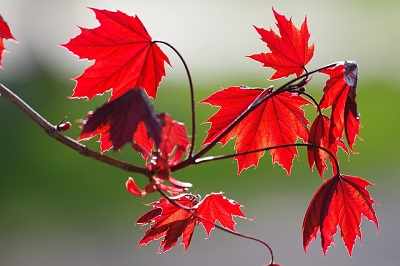
Cracking: A Consequence of Rapid Growth
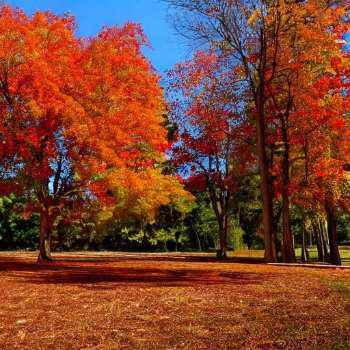
The Challenge of Branch Strength
The rapid growth of Autumn Blaze maples is well-known and can give rise to long and brittle branches. Unfortunately, these characteristics make the trees susceptible to breakage and cracking when exposed to severe weather conditions such as strong winds or heavy snowfall. As a result, the overall health, structural integrity, and visual appeal of the trees are jeopardized.
Autumn Blaze maples are renowned for their fast growth, allowing them to establish themselves quickly in various landscapes. However, this rapid growth often leads to the development of elongated branches that are relatively weak and prone to brittleness compared to slower-growing tree species. While these long branches contribute to the trees’ aesthetic charm, they also pose a risk of damage from external forces.
In regions prone to high winds, the long and slender branches of Autumn Blaze maples are especially vulnerable. Intense gusts exert considerable pressure on these branches, causing them to bend, snap, or even break off entirely. Once the branches are damaged, the tree’s overall health may suffer since it relies on efficient water and nutrient transportation through its branches.
Additionally, the accumulation of snow and ice poses a significant threat to the structural integrity of Autumn Blaze maples. The extended branches of these trees have less capacity to bear the weight of heavy snow, leading them to bend or break under the strain. Such cracks and fractures not only weaken the tree’s structure but also provide entry points for diseases and pests.
The susceptibility of Autumn Blaze maples to branch breakage not only impacts their health but also diminishes their visual appeal. Damaged or broken branches detract from the trees’ overall aesthetics and disrupt their symmetrical form. These unsightly branches compromise the tree’s appearance, particularly during the growing season when the vibrant red and orange foliage is a highlight.
To mitigate the risks associated with the long and brittle branches of Autumn Blaze maples, proactive measures can be taken. Regular pruning and trimming are essential for managing the trees’ growth and reducing the likelihood of branch failure. Strategic pruning techniques, such as thinning out crowded areas and removing weak or dead branches, can enhance the trees’ structural integrity and promote healthier growth patterns.
Careful consideration should also be given to the placement of Autumn Blaze maples in the landscape. Choosing locations that provide some protection from strong winds, such as near buildings or other trees acting as windbreaks, can help minimize the risk of branch damage. Additionally, factors such as soil quality, drainage, and sun exposure should be taken into account when selecting sites for planting, ensuring optimal growth conditions and minimizing stress on the trees’ structure.
Regular inspections by qualified arborists are crucial for detecting weak or damaged branches early on. Arborists can assess the overall health of the trees, identify potential vulnerabilities, and provide recommendations for appropriate interventions. They may suggest measures such as targeted pruning, the use of support systems like cabling or bracing, or, in severe cases where there is a significant risk to property or safety, tree removal.
Protecting Against Cracking
To safeguard your Autumn Blaze maple tree against cracking, consider the following preventive measures:
- Selective Pruning: Use selective pruning to cut down any branches that are too weak or lengthy. This procedure encourages the development of stronger branches and aids in preserving the tree’s organic form.
- Routine Inspections: Inspect your tree on a regular basis to identify any possible weak points or signs of stress. To avoid future damage, deal with any issues right away.
- Install barriers or windbreaks all around the tree to lessen the effects of heavy winds. These structures may contribute to the creation of a microclimate that protects the tree from exposure to too much wind.
Shallow Roots: Overcoming the Challenge
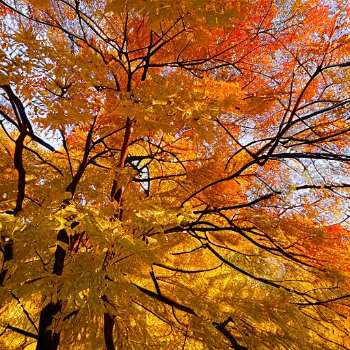
Understanding Shallow Root Systems
Autumn Blaze maple trees inherit shallow root systems from their parent species, which can pose difficulties when attempting to grow them in specific yards. The shallow root system of these trees makes them more vulnerable to issues such as nutritional deficiencies, drought stress, and stability concerns.
The shallow root systems of Autumn Blaze maples limit their ability to access nutrients effectively, leading to a higher risk of nutritional deficits. These shallow roots have limited access to nutrient-rich soil layers, making it challenging for the trees to acquire the necessary minerals and elements for their growth and overall health. As a result, the trees may experience deficiencies in vital nutrients like nitrogen, phosphorus, and potassium, which can have adverse effects on their physiological processes, including photosynthesis, energy production, and overall vigor.
Additionally, the shallow root systems make Autumn Blaze maples more susceptible to drought stress. With limited root depth, the trees struggle to tap into deeper soil moisture reserves during dry periods, leading to difficulties in maintaining adequate water uptake and hydration. The lack of water availability can result in dehydration, wilting, leaf scorch, and potential decline. Drought stress weakens the trees’ immune systems, making them more vulnerable to pests and diseases, further compromising their health and vitality.
Furthermore, the shallow root systems of Autumn Blaze maples contribute to stability issues. Compared to trees with deeper root systems, the anchoring capacity of shallow roots is relatively weaker. As a result, the trees are more prone to uprooting or toppling during strong winds, storms, or other adverse weather conditions. This vulnerability is particularly significant when the trees are planted in compacted or poorly drained soils, where root penetration and development are further limited.
To address the challenges associated with shallow root systems in Autumn Blaze maples, several strategies can be implemented. Providing adequate nutrition through regular fertilization is crucial. This involves supplementing the soil with balanced and targeted fertilizers to ensure the trees receive the necessary nutrients they may be lacking due to their shallow roots. Consulting with a professional arborist or horticulturist can help determine the appropriate fertilization program to support optimal tree health.
Proper irrigation practices are also essential for shallow-rooted trees, particularly during dry periods. Deep watering at infrequent intervals encourages root growth and helps the trees access moisture from deeper soil layers. Additionally, applying mulch around the base of the trees can help retain soil moisture, reduce weed competition, and regulate soil temperature, providing additional support for the shallow roots.
Careful consideration should be given to the planting location and conditions to enhance stability. Selecting a site with well-drained soil, sufficient space for root development, and protection from strong winds can promote healthier root growth and reduce the risk of uprooting. In some cases, staking or bracing the trees may be necessary to provide additional support and prevent potential damage during storms.
Regular monitoring and maintenance are vital for managing the challenges associated with shallow root systems. Conducting routine inspections of the trees’ health, including observing foliage condition, growth patterns, and signs of stress, allows for early detection of issues and prompt intervention. Seeking advice from a certified arborist can provide valuable insights and recommendations for specific care practices tailored to the unique needs of Autumn Blaze maples.
Enhancing Root Development
To overcome the limitations of shallow roots and promote healthy growth, consider the following strategies:
- Mulching: Cover the base of the tree with a layer of mulch that reaches the dripline. Mulch benefits the root system by assisting with soil moisture retention, regulating soil temperature, and reducing weed competition.
- Regular Watering: To guarantee that the tree’s shallow roots get enough moisture, perform regular, deep watering sessions. To assist the roots to penetrate the soil more deeply, water gently and thoroughly.
- Supplementary watering: If there are protracted dry spells or droughts, you may want to use supplementary watering. This will aid in preventing water stress and encourage the establishment of healthy roots.
FAQs
Why is my Autumn Blaze Maple Tree Dying?
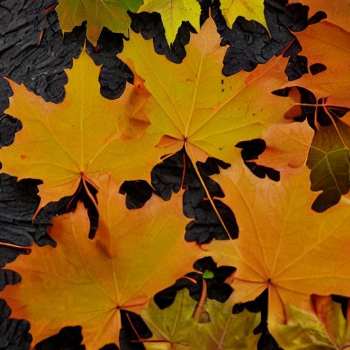
Autumn Blaze maple trees are susceptible to the deadly fungal disease verticillium wilt, which may cause their deterioration and eventual death. Through the tree’s root system, the fungus enters and spreads, clogging the vascular system. This causes an obstruction in the flow of nutrients and water, which ultimately causes the tree to wither and die.
Verticillium wilt in an Autumn Blaze maple tree might manifest itself in the following early signs:
- Leaf discoloration: Yellowing or browning between the veins of leaves may indicate a problem with nutrition intake.
- Wilting and Drooping: Even when there is enough water available, affected branches or areas of the tree may begin to wilt and droop.
- Branch Dieback: Over time, the tips of branches may first start to fall off before moving toward the main stem.
- Stunted development: The tree’s general development may slow down or become stunted, producing smaller and fewer leaves.
What are the Early Signs of a Maple Tree Dying?
There are a few early signs of deterioration in maple trees, notably Autumn Blaze maples. These symptoms act as warning signs that the tree could be in trouble and needs help right away. These are a few of the signs:
- Oozing Sap: If you detect sap dripping from your maple tree’s trunk or branches, it might be an indication of a more serious problem, such a disease or insect infestation.
- Cracking Bark: Splits or cracks in the bark may be an indication of the tree’s interior stress or damage. Extreme weather, fungi, or other variables may be at blame for this.
- Black Sooty Mold: When maple trees are attacked with insects like aphids or scale insects, black sooty mold often develops on the leaves or bark of the trees. This mold may obstruct sunlight and prevent photosynthesis, which will cause the tree to deteriorate.
How do You Revive a Dying Maple Tree?
It takes early intervention and the proper care to revive a dying maple tree. Even while not all situations will result in a good resolution, doing the following actions may increase the tree’s chances of survival:
- pH Soil Adjustment: To assess the pH of the soil surrounding the tree, do a soil test. The ideal soil pH range for maple trees is between 5.5 and 7.3. To bring the pH within the ideal range, amend the soil if it is either too high or too low.
- Organic Material Inclusion in Soil: By adding organic matter, such as compost or well-rotted manure, you may improve the general quality of the soil. This improves soil structure and nutrient availability, encouraging the growth of healthier roots.
- Proper Watering: Make sure the tree gets enough water, particularly during dry spells. Deep watering is essential because it enables the moisture to get to the deeper root zone, which is where it is most required.
- Professional Consultation: It is advised to speak with a licensed arborist if the tree’s health worsens further if the reason of the decline is unclear. They are able to do a full evaluation, identify any underlying issues, and suggest the best courses of action.
What are the Signs of Root Rot on Maples?
Maples, notably Autumn Blaze maples, are susceptible to the fungal disease known as root rot. Early intervention and efficient treatment depend on being able to spot the signs of root rot. Root rot on maples might show the following signs:
- Foliage Decline: Chlorosis, or the yellowing or browning of leaves between the veins, may be present throughout the foliage of the crown as a whole or in a particular area. Affected leaves may wilt, wither, and ultimately drop off too soon.
- Root rot in maple trees often results in stunted development and decreased vitality. They may generate fewer leaves, which might give the impression that their canopy is scant.
- Root decay: When examining the roots, you could notice that the root tissue has darkened or changed color. The appearance and smell of infected roots may be unpleasant.
- Sudden Branch Dieback: In extreme circumstances, whole branches or parts of the tree may suffer from quick dieback, with withering leaves and brittle branches.
To stop the disease from spreading, you must act right once if you suspect root rot in your Autumn Blaze maple tree. For accurate diagnosis and advice on suitable treatments, speak with an arborist or tree care specialist.
Conclusion
Any landscape may benefit from the brilliant color and elegant touch that Autumn Blaze maple trees provide. The possible problems that may develop with these trees, however, must be understood. Property owners should take proactive measures to protect the health, longevity, and beauty of their Autumn Blaze maple trees by being aware of and resolving issues such structural weakness, iron deficiency, root rot, cracking, and shallow roots. Recall to make regular tree care investments, to seek expert advice when required, and to act quickly if any issue signs appear. Your fall Blaze maple will continue to astound with its stunning fall display with the right attention and care.
Related Posts:
Autumn Blaze Maple Alternatives: Options for Fall Foliage
Autumn Blaze Maple Growth Rate (How Quickly Do They Grow)
Autumn Blaze Maple Pros And Cons – 12 Amazing Facts
Autumn Blaze Maple Growth Chart – (How Tall, Fast It Grow?)
Autumn Blaze Maple – Grow, Care , Prune, Facts, Diseases [Full Info]
Other related Posts:
Blue Point Juniper Problems (And Easy Solutions)
Strawberry Tree Problems and Diseases
Zelkova Tree Problems – Know All The Pest and Diseases
China Doll Plant Problems: Troubleshooting and Solutions
Common Weeping Cherry Tree Problems – 9 Insects and Diseases
Common Hackberry Tree Problems: 5 Insects and Diseases
Reference:
https://extension.usu.edu/botanicalcenter/trees-of-varga-arboretum/autumn-blaze-maple
https://extension.sdstate.edu/autumn-blaze-maple
